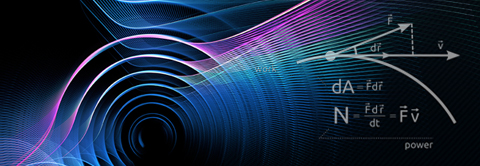Quantum hydrodynamic theory for plasmonics: from molecule-coupling to nonlinear optics
2023.11.14 14:37
| 날짜 | 2023-11-15 16:00 |
|---|---|
| 일시 | 16:00PM, 15th Nov (Wed) |
| 장소 | E6-6, #119 |
| 연사 | Prof. Cristian Ciraci(Istituto Italiano di Tecnologia (IIT)) |
Metals support surface plasmons at optical wavelengths and have the ability to localize light to sub-wavelength regions. Nano-gap plasmonic systems – in which two or more metallic nanoparticles are separated only few nanometers from each other by an insulating spacer – have been predicted to produce enormous field enhancements (as much as thousands of times that of the incident radiation). For the narrowest (< 1 nm) gaps, light can be so tightly confined that the nonlocality associated with the dielectric response of the metal and quantum effects can have a strong impact on the scattering properties of the system, placing strict bounds on the ultimate field enhancement [1]. A reliable way to theoretically describe and numerically model optical properties of plasmonic nanostructures with different length scales requires methods beyond classical electromagnetism. In this context, it becomes very important to develop simulation techniques to take into account quantum microscopic features at the scale of billions of atoms. A promising solution is given by the hydrodynamic theory, which takes into account the nonlocal behavior of the electron response by including the electron pressure and it can be generalized so that it can describe electron spill-out and tunneling effects [2, 3, 4]. This method allows to explore light-matter interactions in extreme scenarios in which microscopic features can strongly affect the macroscopic optical response. In this seminar, I will present the quantum hydrodynamic theory for plasmonics and will discuss some applications including, photon emission [5], strong-coupling [6] and nonlinear optics [7, 8].
References
[1] C. Cirac`ı, R. T. Hill, J. J. Mock, Y. A. Urzhumov, A. I. Fernandez-Dominguez, S. A. Maier, J. B. Pendry, A. Chilkoti, and D. R. Smith, “Probing the ultimate limits of plasmonic enhancement,” Science, vol. 337, no. 6098, pp. 1072 – 1074, 2012.
[2] C. Cirac`ı and F. D. Sala, “Quantum hydrodynamic theory for plasmonics: Impact of the electron density tail,” Physical Review B, vol. 93, no. 20, p. 205405, 2016.
[3] C. Cirac`ı, “Current-dependent potential for nonlocal absorption in quantum hydrodynamic theory,” Physical Review B, vol. 95, no. 24, p. 245434, 2017.
[4] H. M. Baghramyan, F. D. Sala, and C. Cristian, “Laplacian-Level Quantum Hydrodynamic Theory for Plasmonics,” Physical Review X, vol. 11, no. 1, p. 011049, 2021.
[5] H. M. Baghramyan and C. Cirac`ı, “Fluorescence quenching in plasmonic dimers due to electron tunneling,” Nanophotonics, vol. 11, no. 11, pp. 2473–2482, 2022.
[6] C. Cirac`ı, R. Jurga, M. Khalid, and F. D. Sala, “Plasmonic quantum effects on single-emitter strong coupling,” Nanophotonics, vol. 8, no. 10, pp. 1821–1833, 2019.
[7] M. Khalid and C. Cirac`ı, “Enhancing second-harmonic generation with electron spill-out at metallic surfaces,” Communications Physics, vol. 3, no. 1, p. 214, 2020.
[8] F. De Luca and C. Cirac`ı, “Impact of Surface Charge Depletion on the Free Electron Nonlinear Response of Heavily Doped Semiconductors,” Physical Review Letters, vol. 129, no. 12, p. 123902, 2022.







